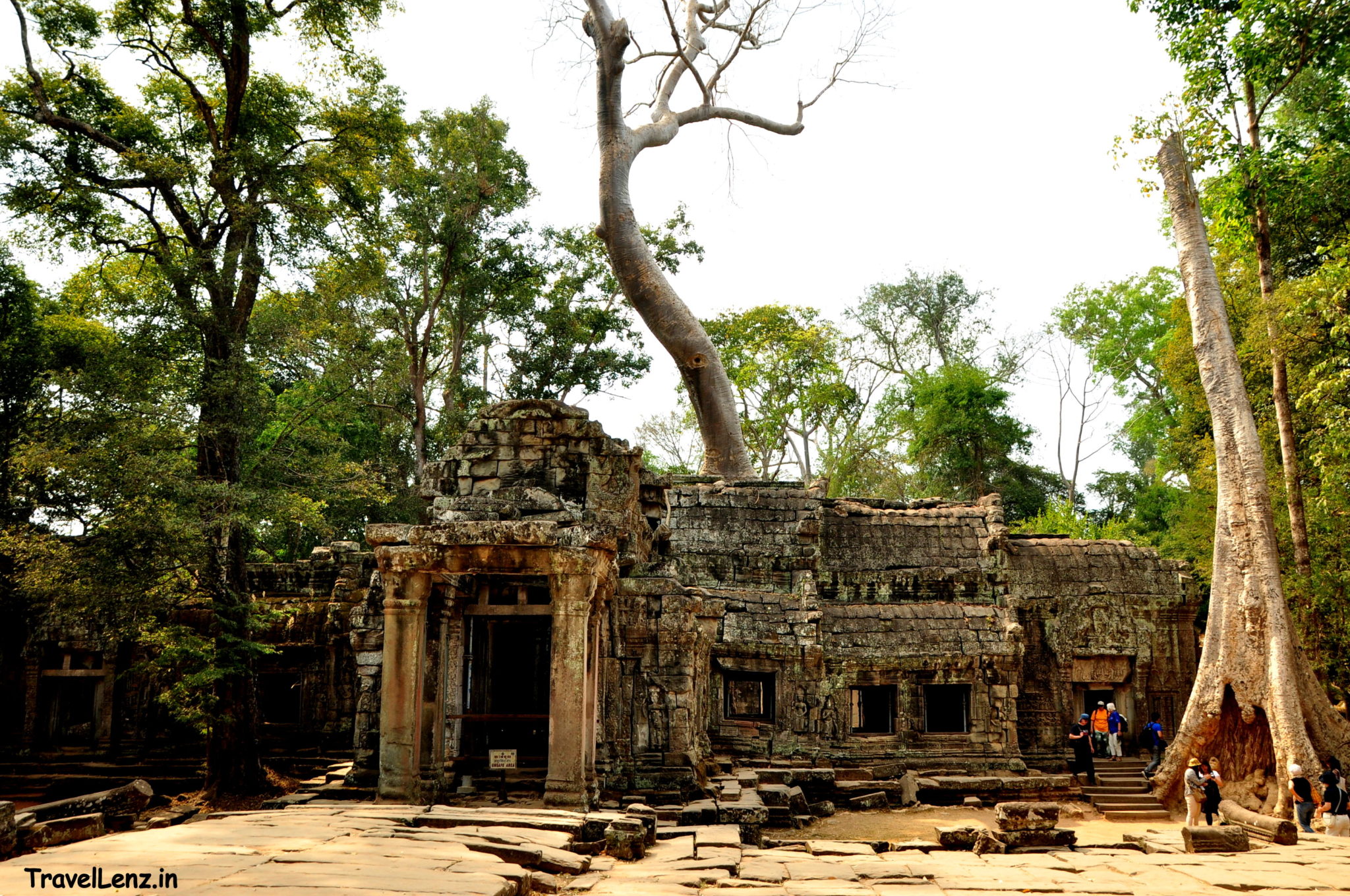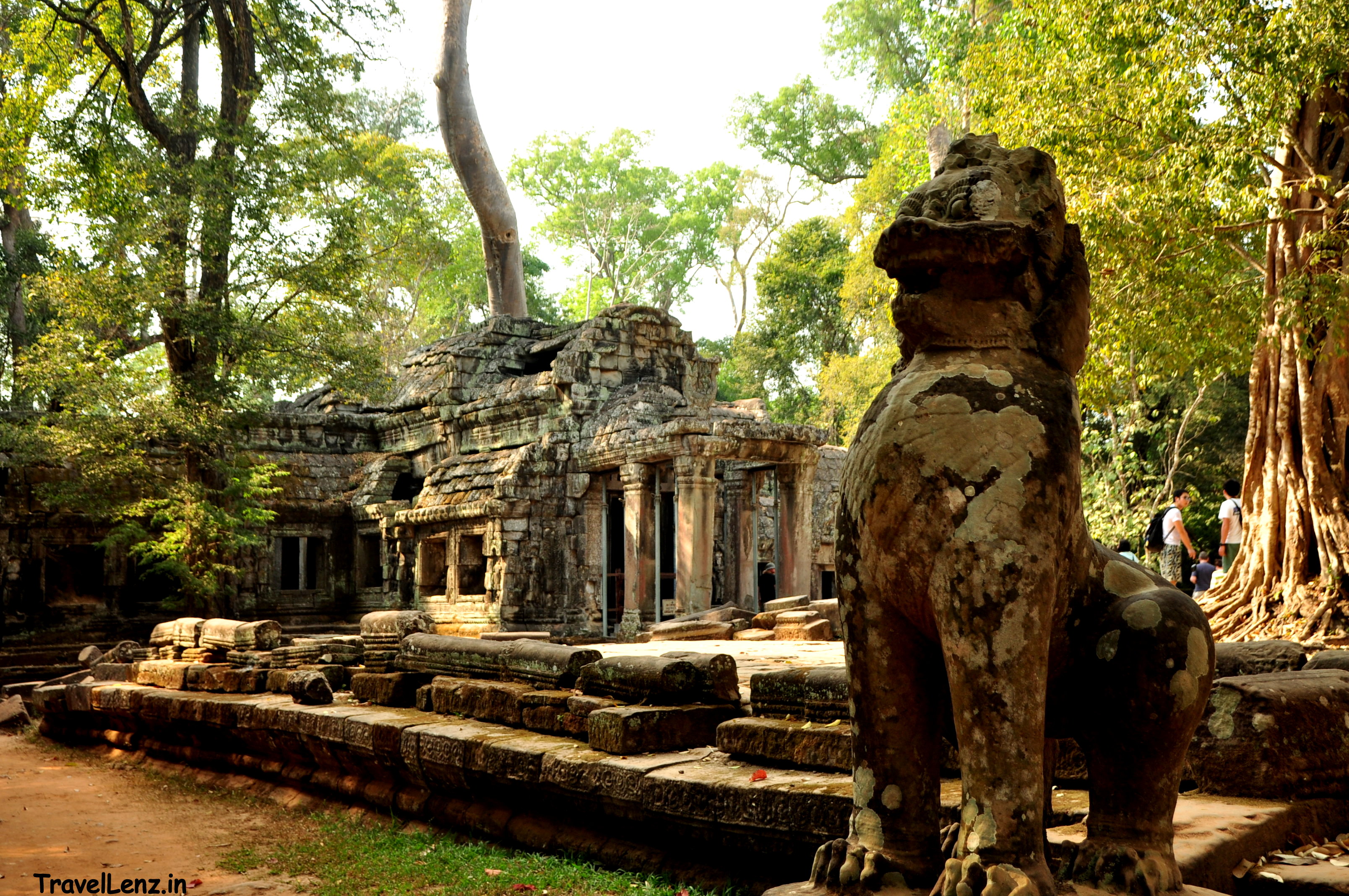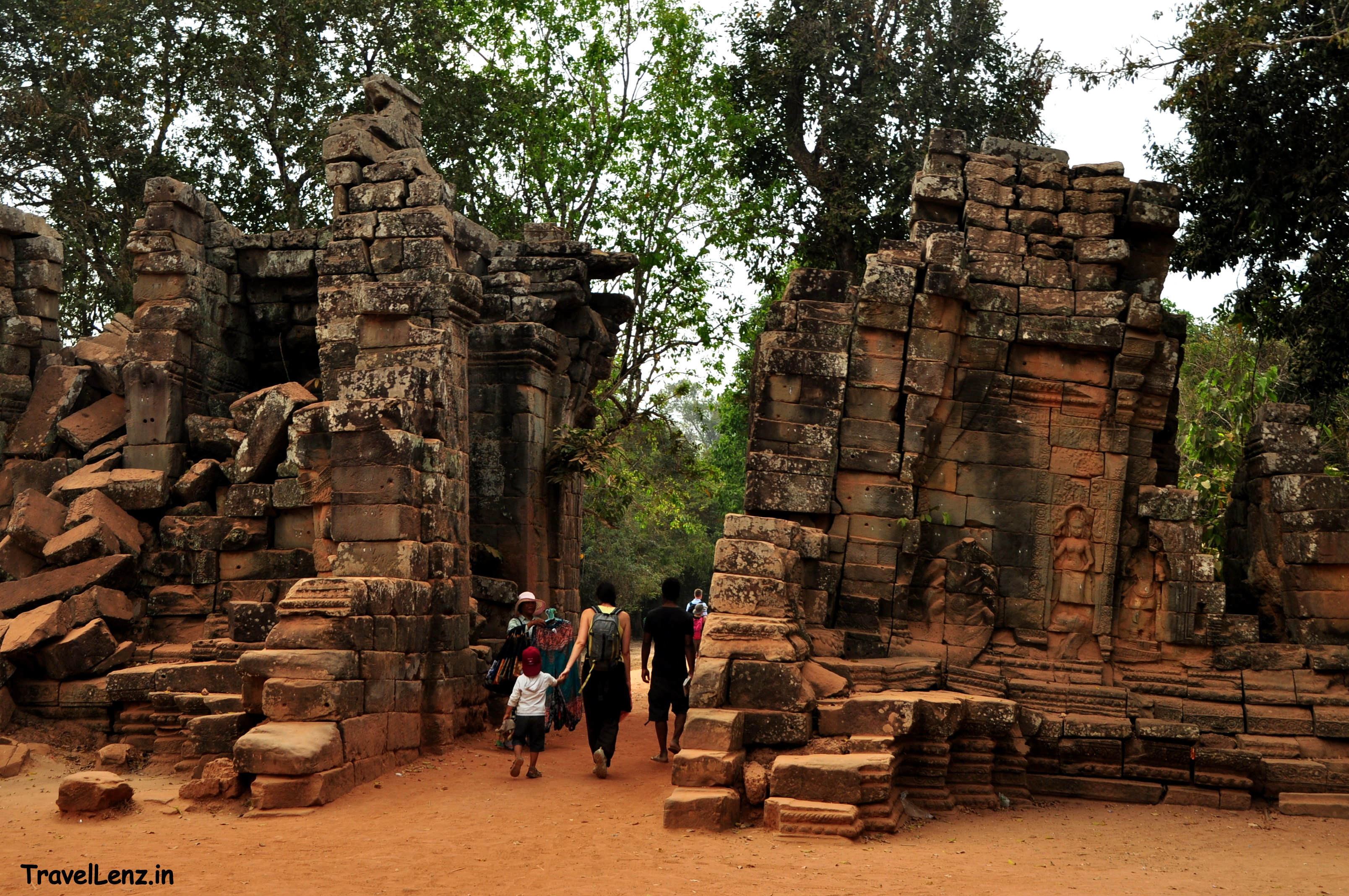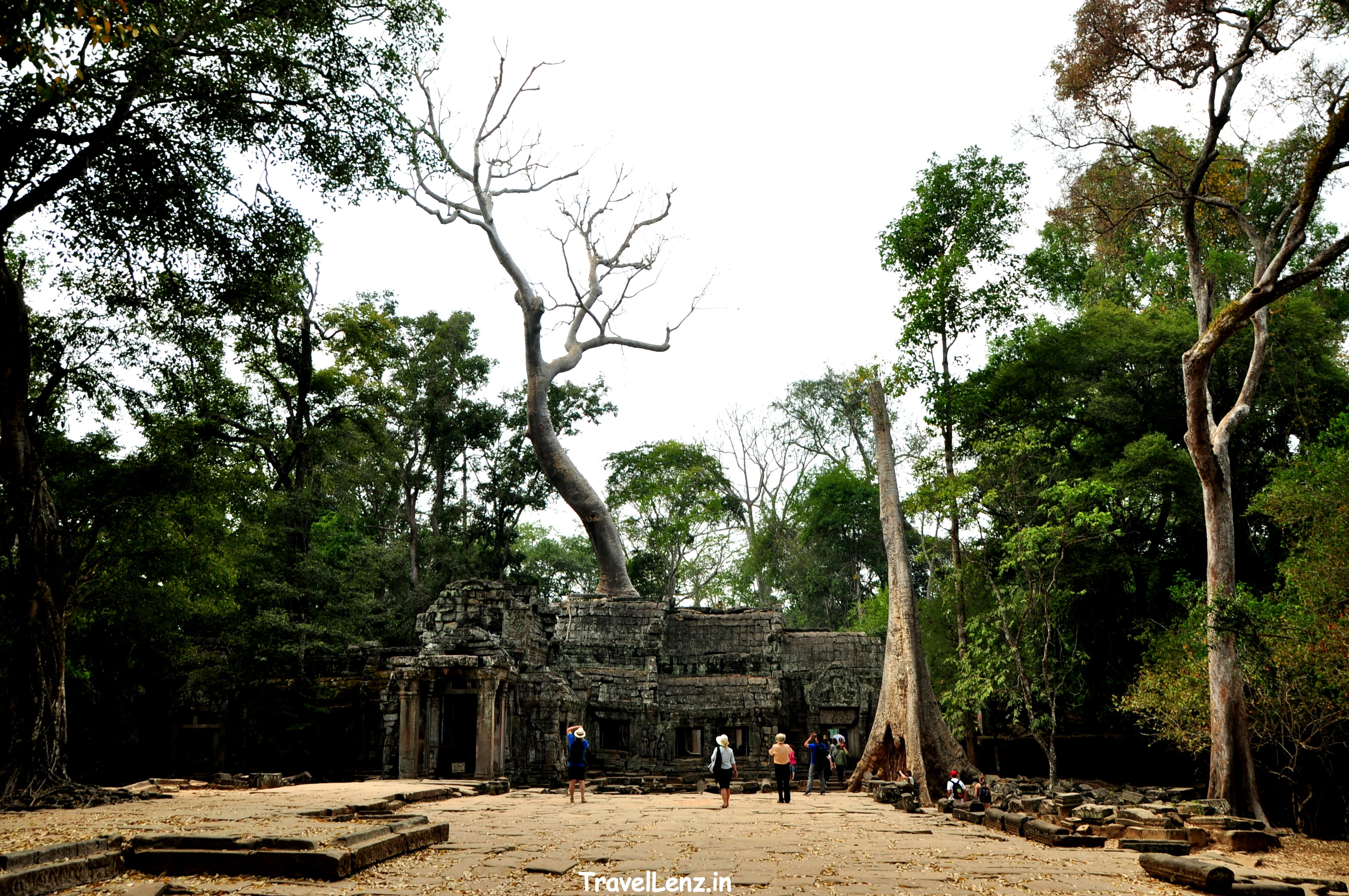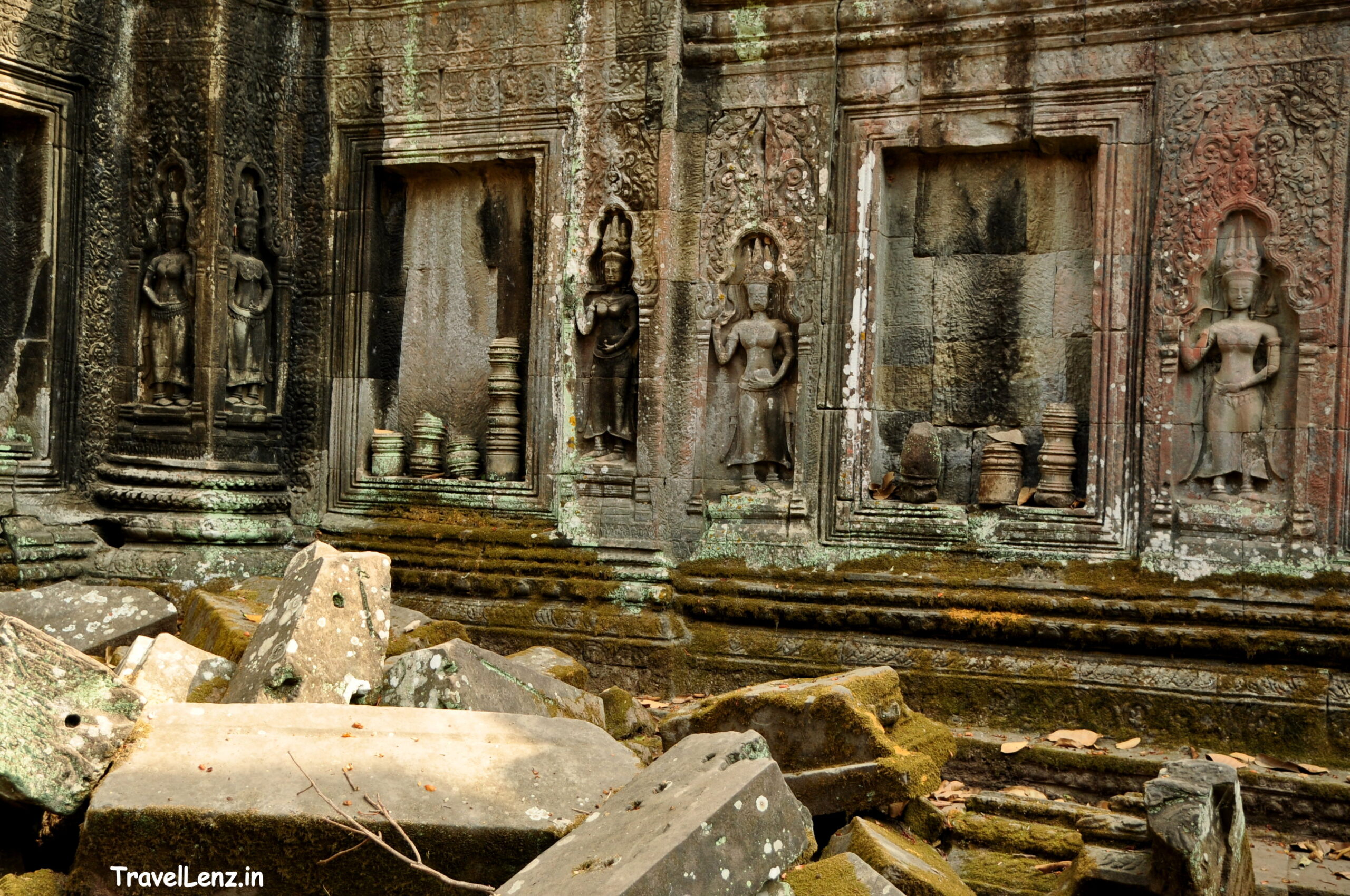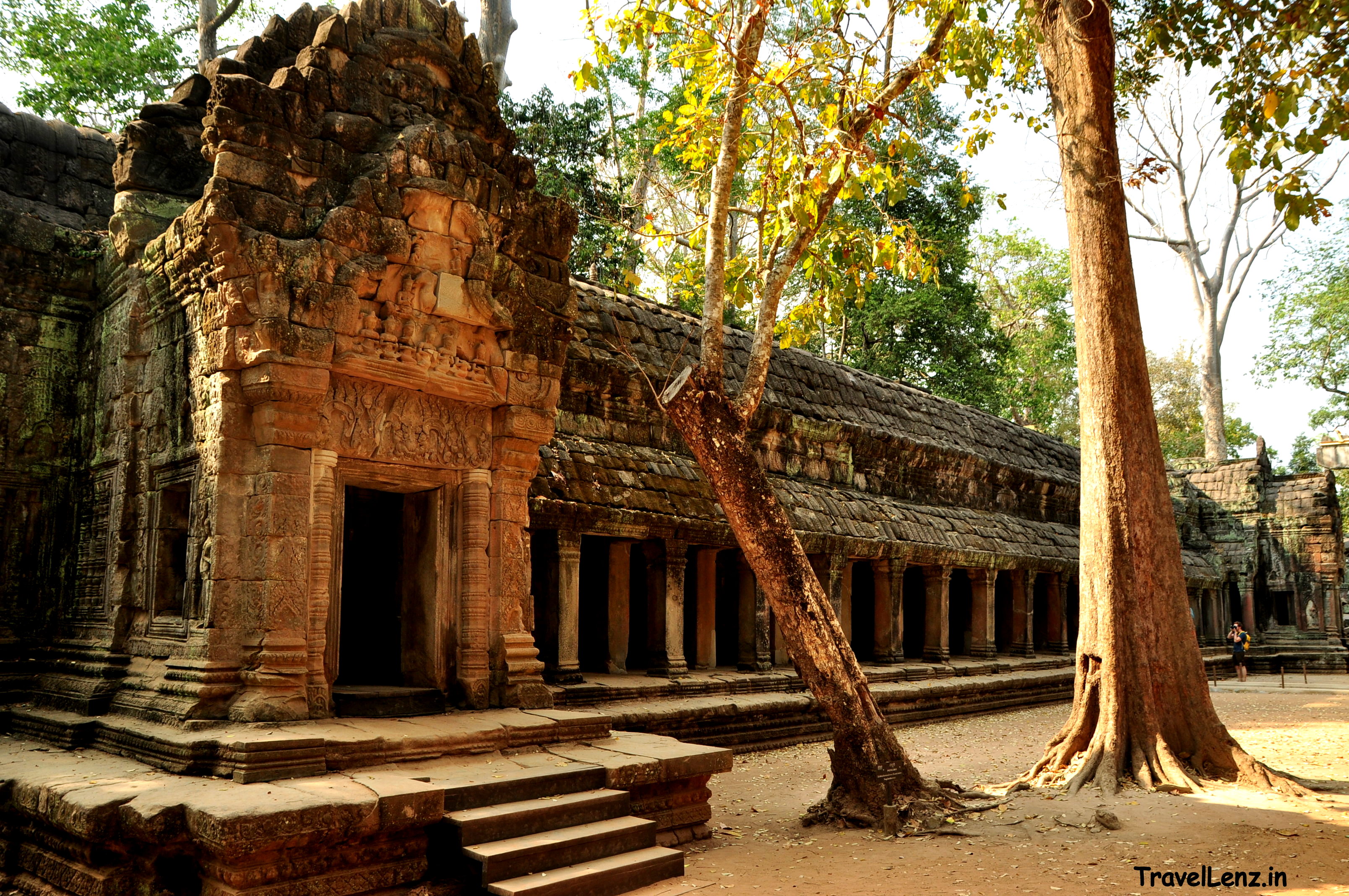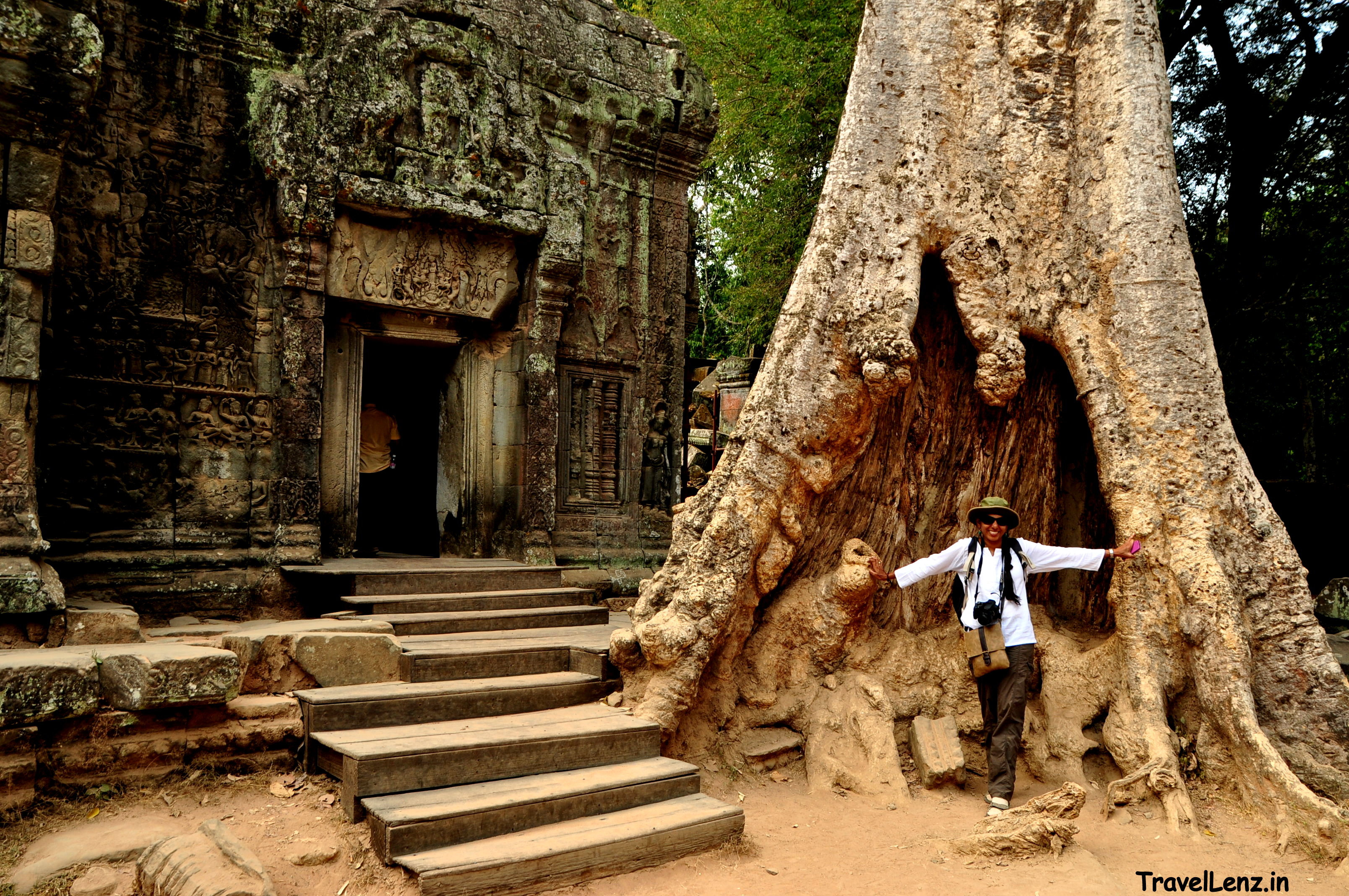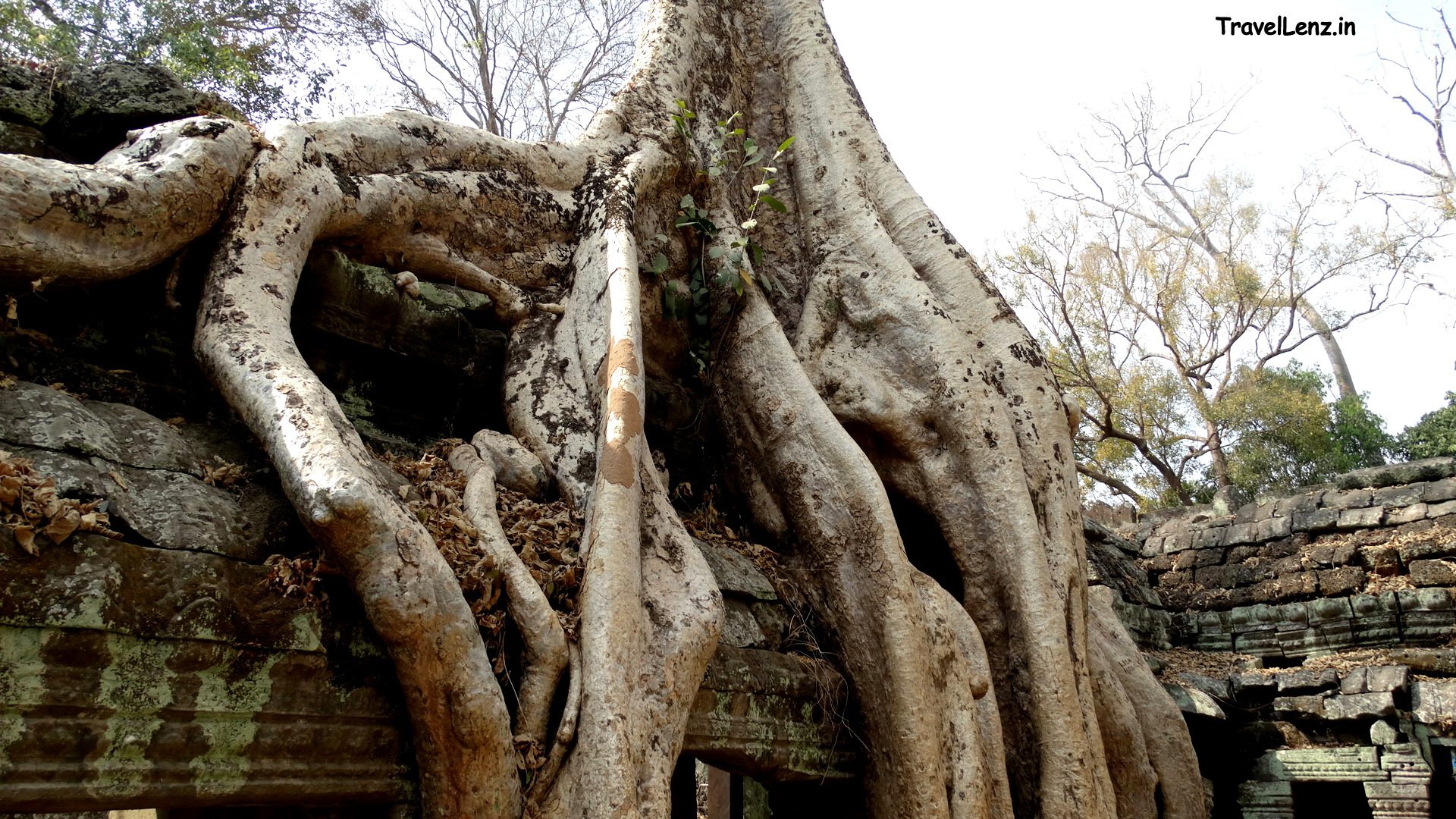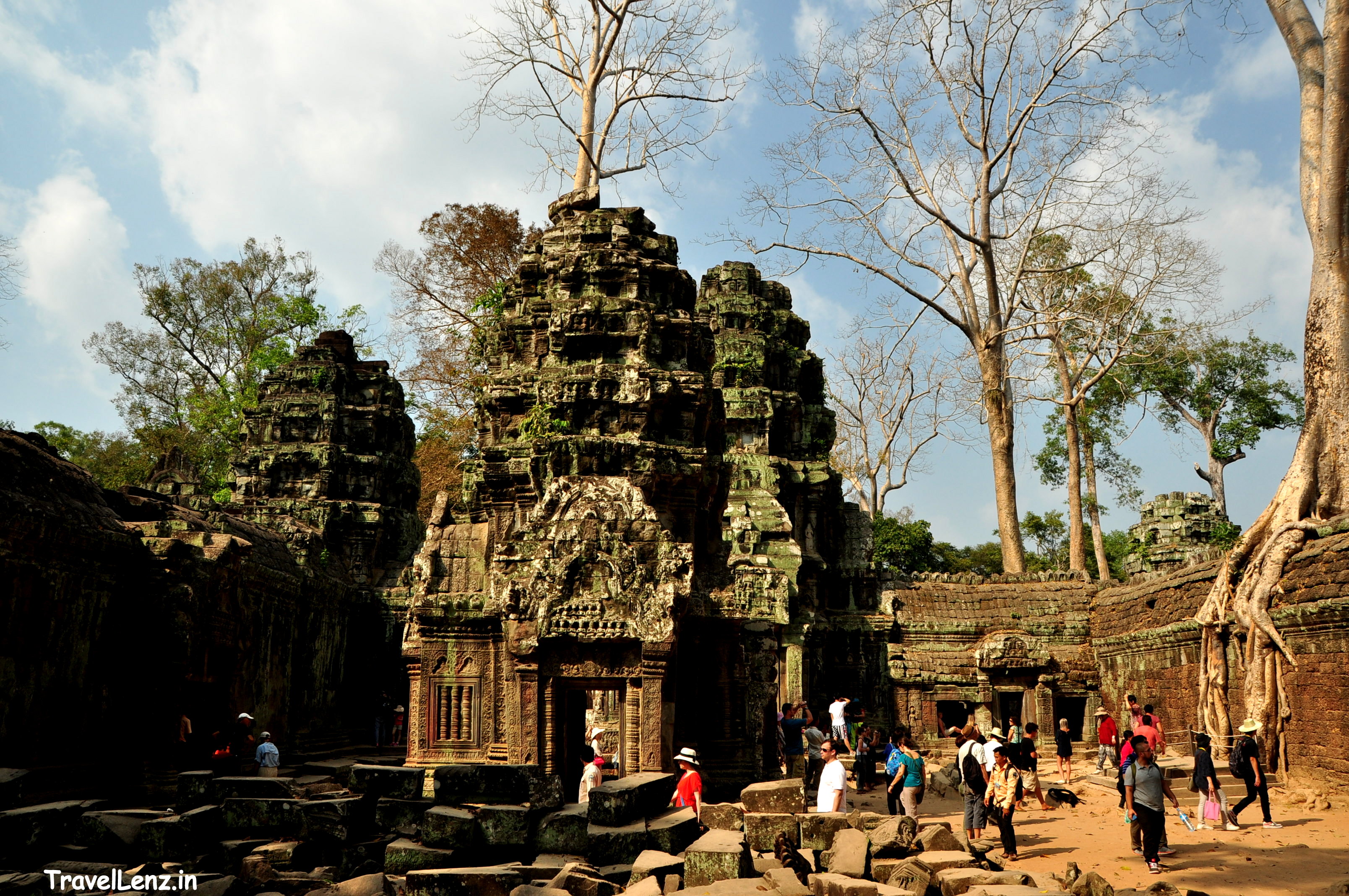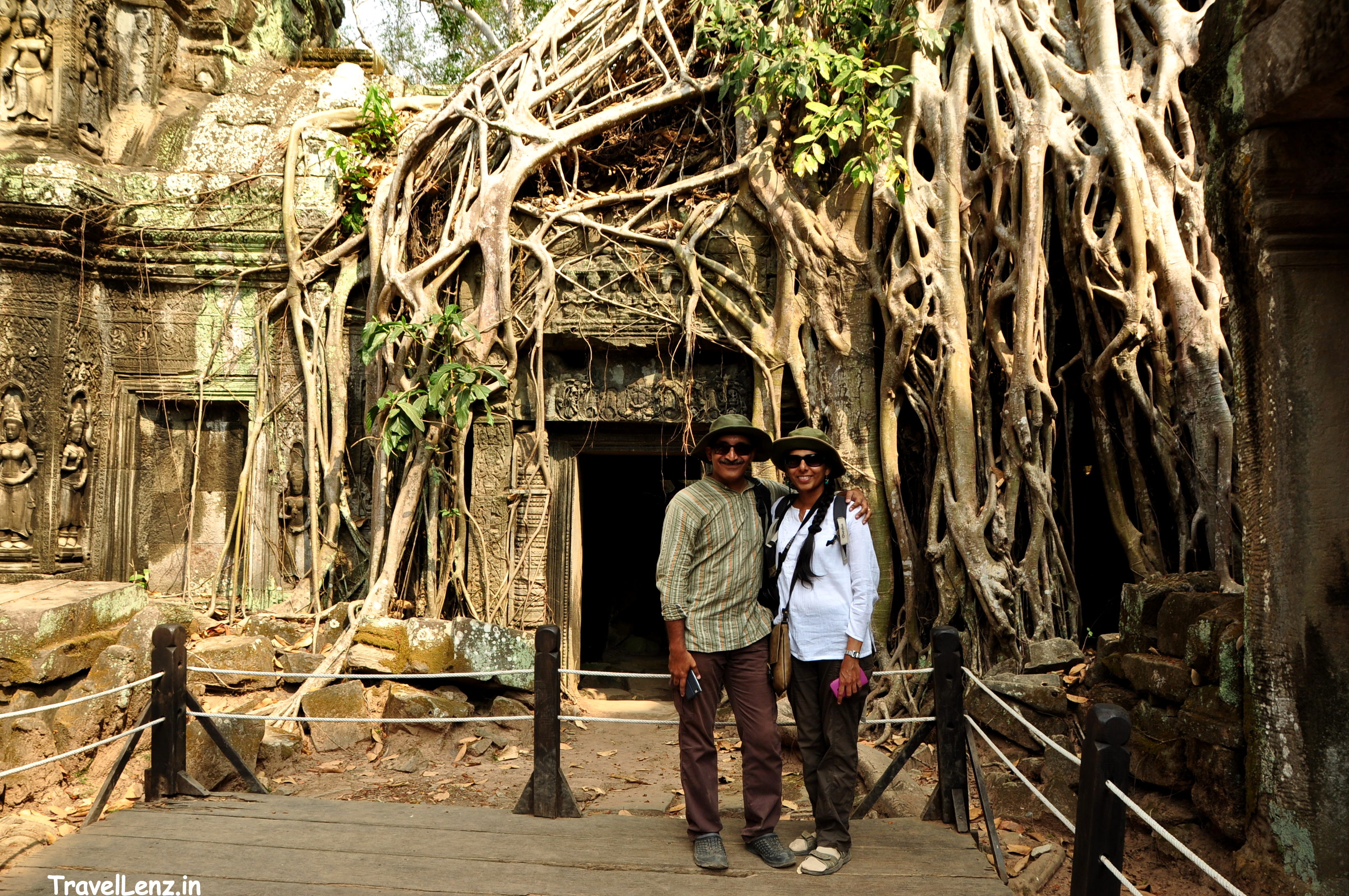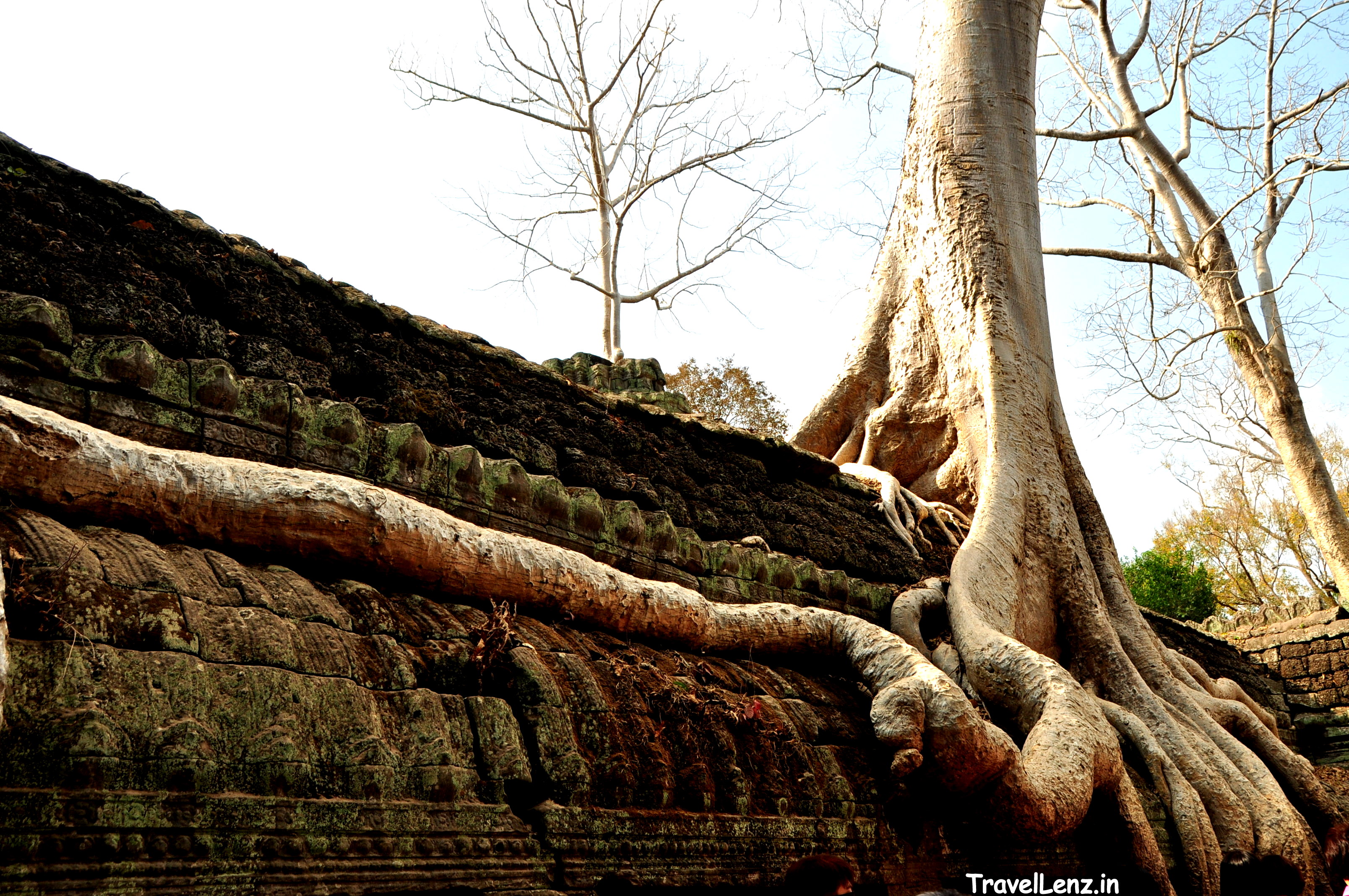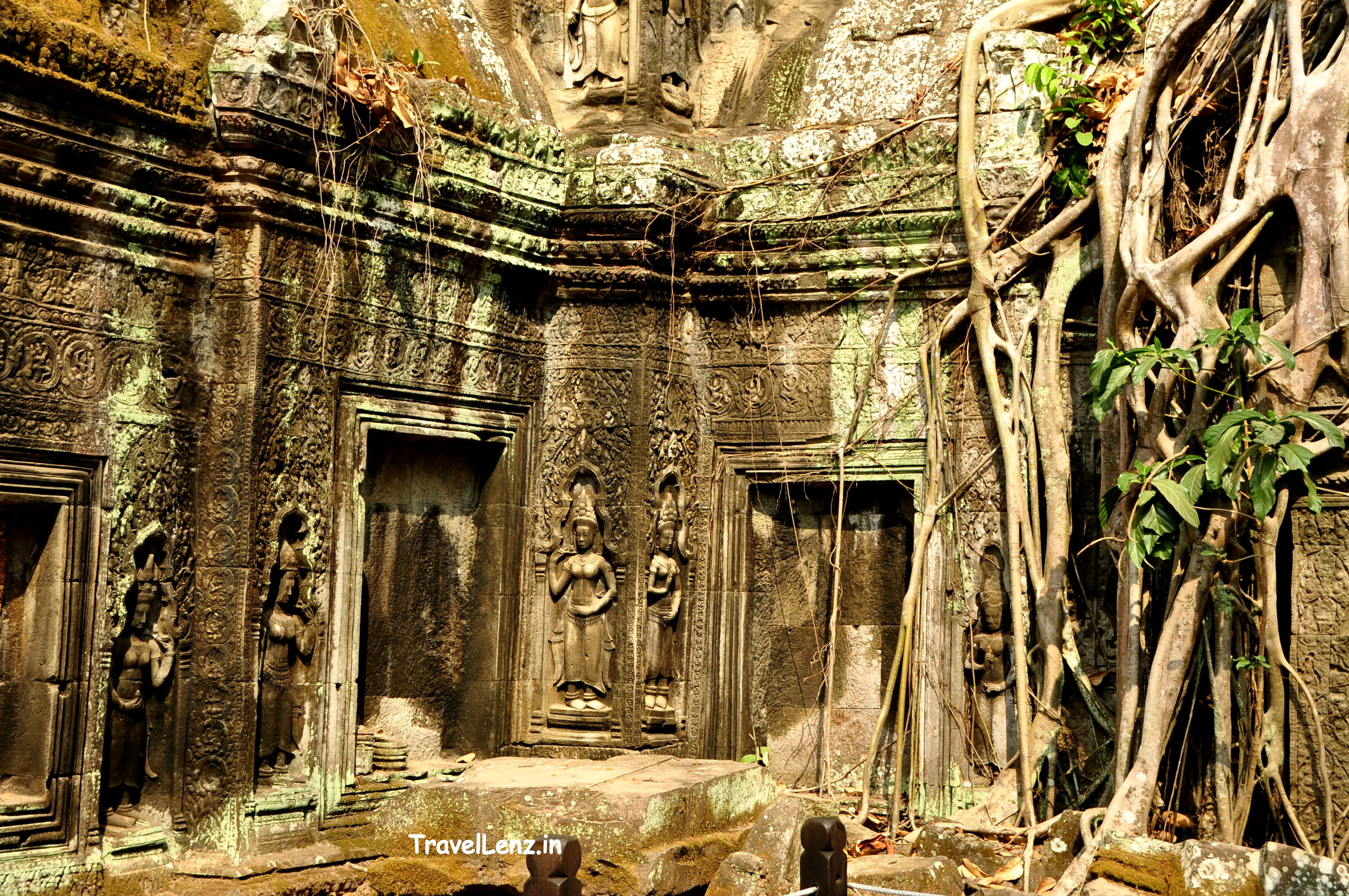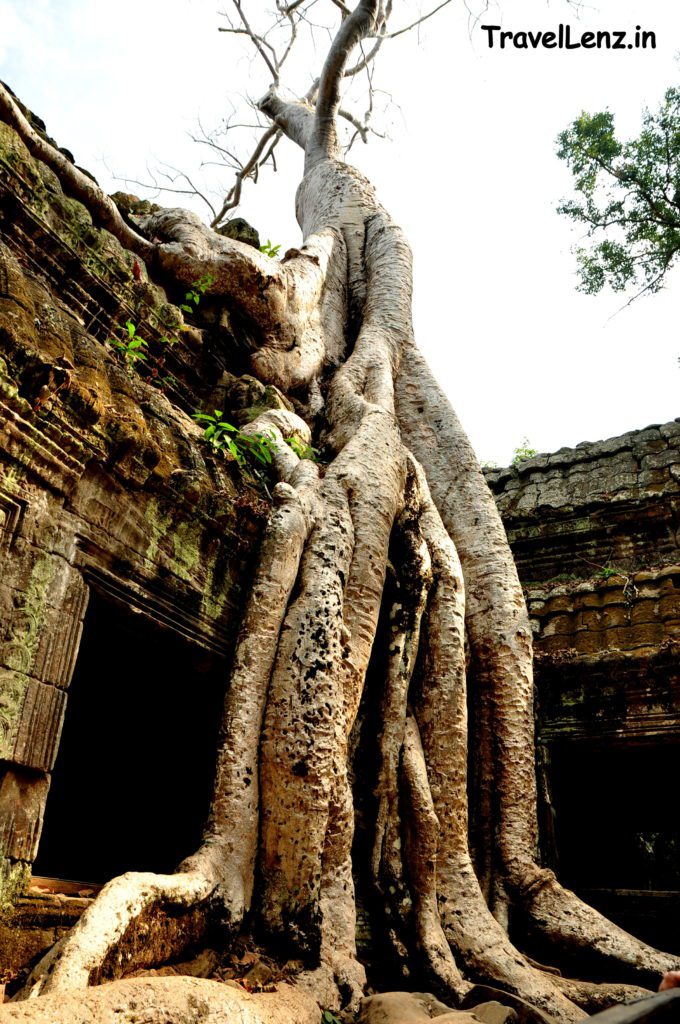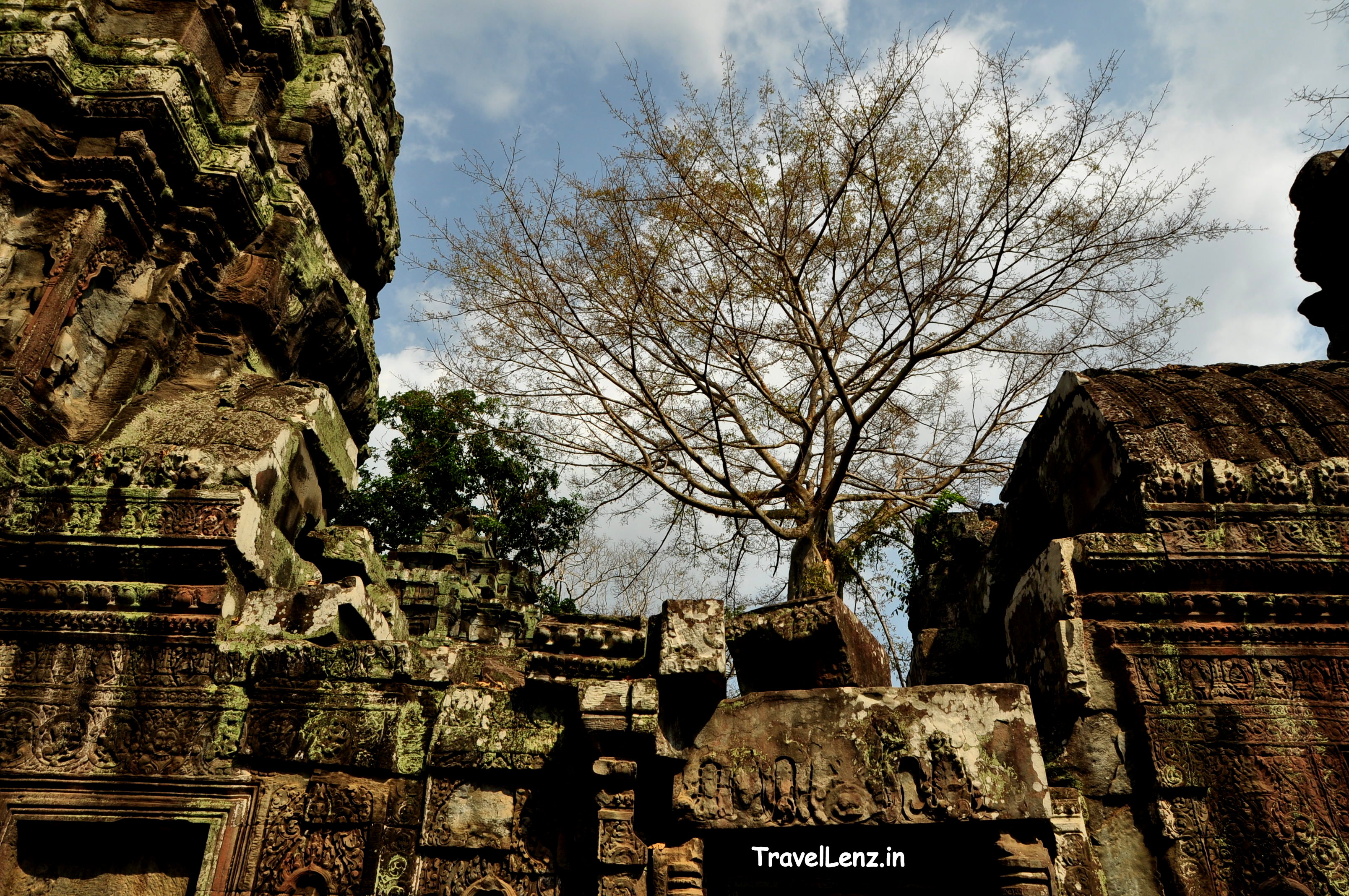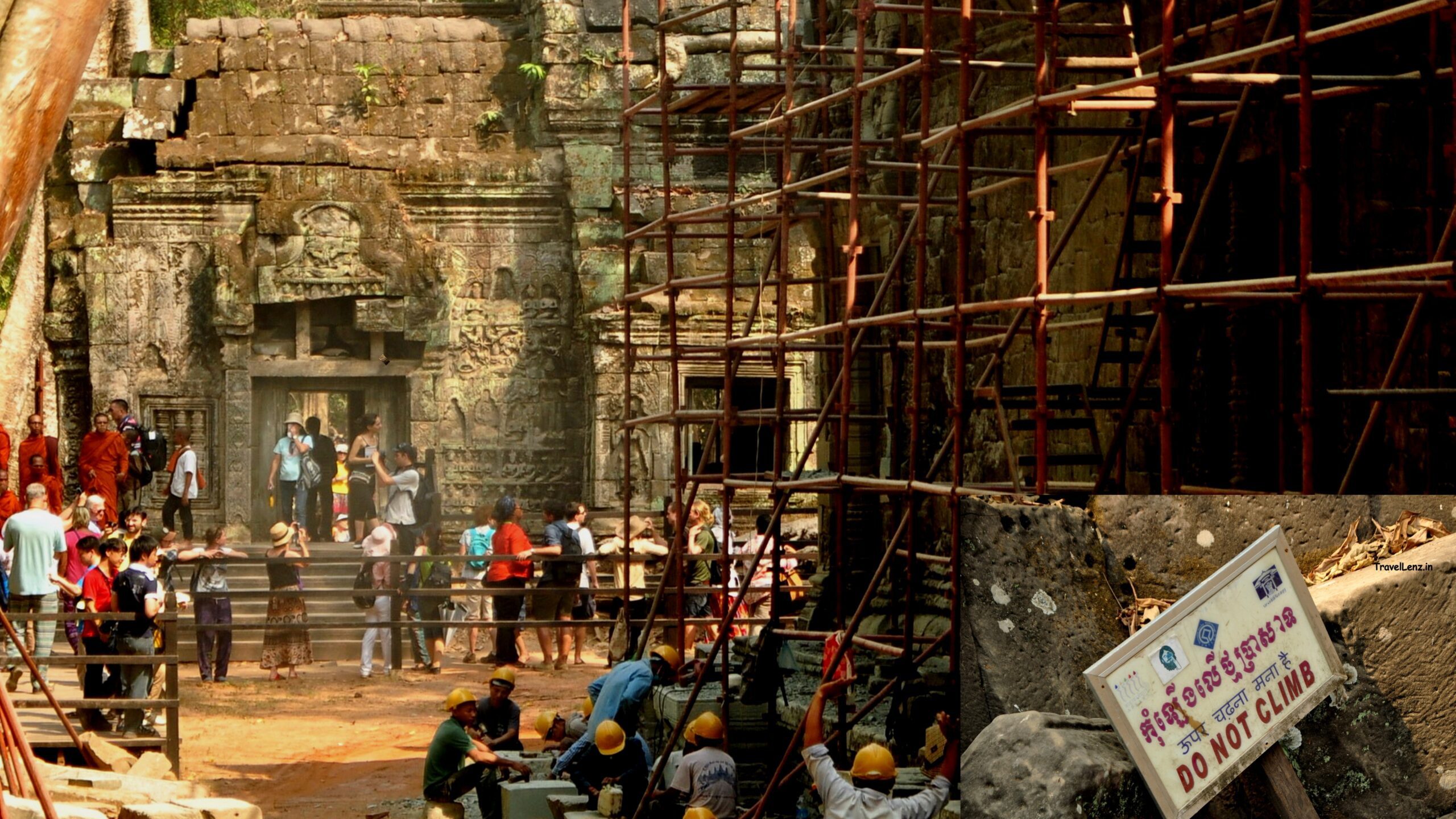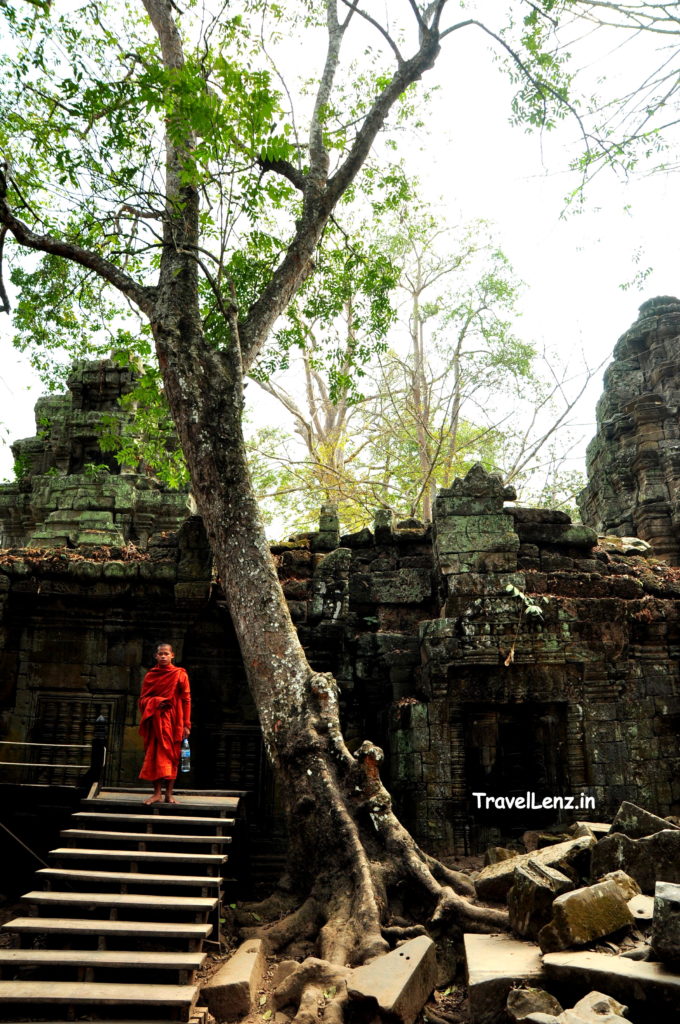Last Updated on May 20, 2021
The first image I ever saw of Cambodia was not of the massive Angkor Wat temple. It was an image of a temple shrouded in a dense jungle. There was an ethereal touch, a romantic aura to the crumbling temple. There were huge trees with gigantic roots spread all over the fallen stones, some probing the walls, a few covering the terraces; the branches intertwining to form a netted roof over a few small shrines, vines twisting around the pillars. A mysterious charm haunted that image of Ta Prohm – there was something that pulled me up and told me to go and visit the place.
The tomb raider temple
And here we were at Ta Prohm, now better known as the Tomb Raider temple as it features in a major scene of the adventure movie. A few shots from the movie were shot here – this is where Angelina Jolie’s Lara Croft, follows a little girl to a shrine and then plucks a white flower before falling through the ground into a pit.
The temple of Ta Prohm was lost in the jungle of Angkor for centuries. Even now, it looks very much the way it must have appeared to the explorers when they first stumbled upon it. When the archaeologists began restoration work at Angkor, they opted to leave Ta Prohm as it had been found. It was difficult to remove the trees from the temple as they had already been more than stone deep.
We entered through a broken gopura on the eastern side. The approach to the temple was through a shaded path. We passed scores of tourists and local children selling trinkets and fruits.
On the way were a few musicians playing on instruments – a placard written near them said they were war veterans. Cambodia is one of the worst affected by the landmines planted during the war between Khmer Rouge and Vietnam. Several victims of the devastation are seen singing using traditional musical instruments at various temple sites to collect funds for rehabilitation. There are many victims of landmines, who cannot work anymore because of their injuries.
The Indian connection
The word “Ta” means ancestors and “Prohm” originates from Brahma, the Hindu god of creation. But that is not just the Indian connection this magnificent temple has. Since 2003, the Archeological Survey of India has been working towards the restoration of this temple which is partly funded by the Ministry of External Affairs, Government of India. As we approached the temple we came across a small pavilion with before and after photos from the restoration project.
Like all the other Angkor temples, naga balustrades and stone lions guard the eastern approach of the temple. The temple had towers, corridors, shrines, galleries, and causeways; but what stood out were the huge trees and the massive roots.
Our Tomb Raider moment
Ta Prohm temple is overrun by trees – Tes mentioned there were strangler figs, banyans and kapok trees – large and old, looking more like giant spider webs.
The whole set-up is a feast for a photographer – but Ta Prohm is crowded.
We had to stand in a queue to take pictures with the Tomb Raider starrer tree. The small doorway where Lara Croft plucked a white Jasmine flower is the most popular of the many strangulating root formations. Tes made us pose in front of the doorway which is now fenced off to keep visitors from touching it and damaging it. Anyway, we would have avoided touching it, for we feared we would also be sucked into a world of spirits like her.
Among the trees and stones
Tes kept on with his photographic skills as we watched in awe the wild beauty of the place. Constructed around the 12th century, Ta Prohm was a Buddhist monastery and university built by Jayavarman VII.
Despite being one of the most visited temples at Angkor, the temple’s crumbling layout allows for surprisingly ample moments of isolation. As you walk along the wooden walkways that meander through the monument, you may come across an empty room or a courtyard filled with nothing but a pile of stones.
And you feel like an explorer from a lost era. Many of the corridors are blocked with huge piles of stone blocks dislodged by the roots and vines of the huge trees.
The walls have a green tinge from the lichen and moss add to the haunting lure of the mazes of the temple’s interior.
And a dinosaur!!
We were also shown a carving that had captured the fancy of many a tourist who had seen it – an extinct dinosaur with triangular back-plates – yes the Stegosaurus. It’s hard to believe that an ancient Khmer sculptor would have seen a dino in the jungle – would the temple have remained intact with giant lizards stomping around!!!
As part of the restoration work, a few of the roots and stones were propped up with iron rods. Scaffolding, metal supports, wooden walkways, and rope fences were also found around the temple.
As we turned a corner we found a group of yellow helmets working on the stones. The Indian connection was found here as well – a placard showing a warning in English, Khmer and Hindi lay ahead.
With their vivid-coloured saffron robes, Monks kept popping in and out of our camera frames providing a striking contrast against the sandstone structure.
As we were leaving, we realised that Ta Prohm clings onto you, just like the deep-rooted clasp of the strangler trees.
Lesson learnt: The best time to visit the temple is either during the early hours or before sunset when visitors throng Angkor Wat or Bakheng.
Our next stop was the twin temples of Thommanon and Chau Say Tevoda.


